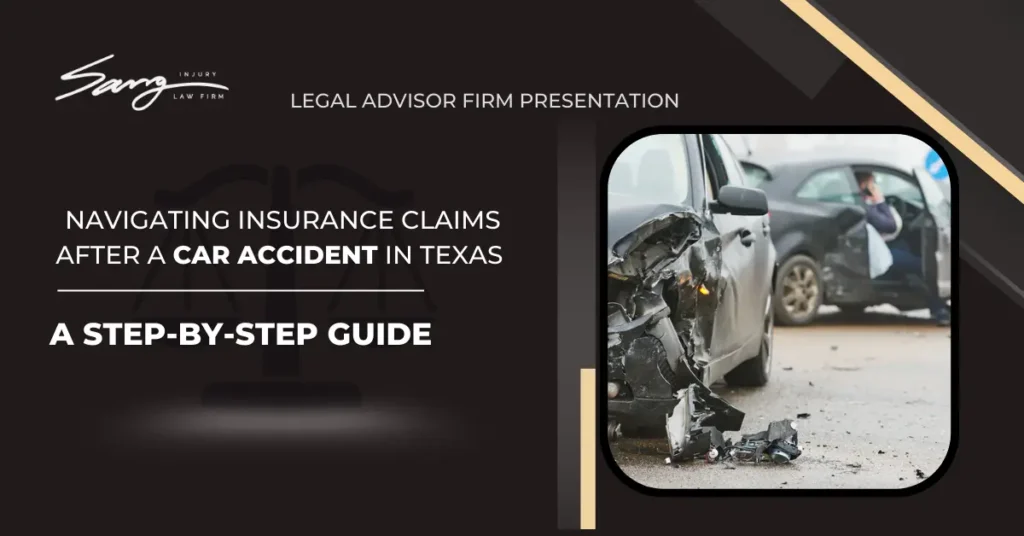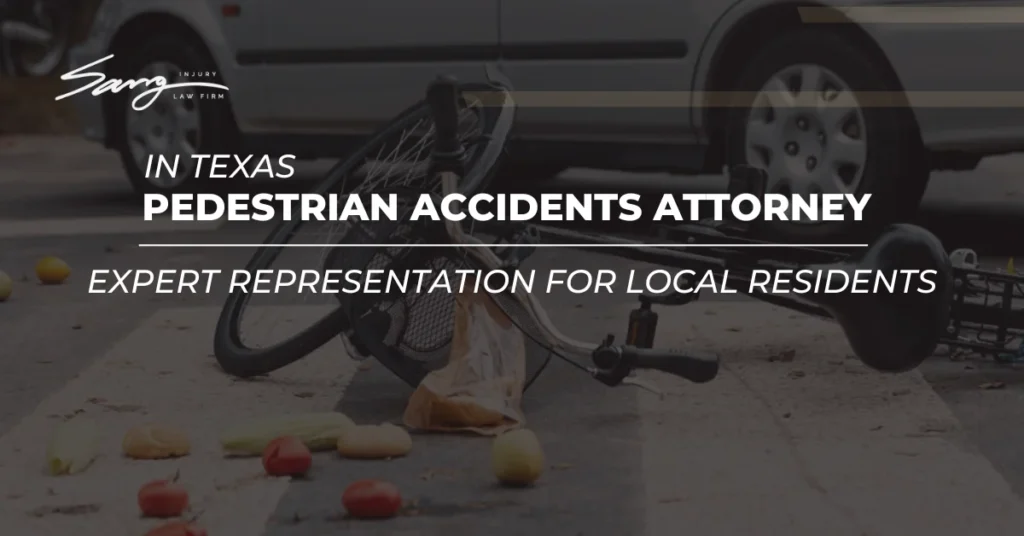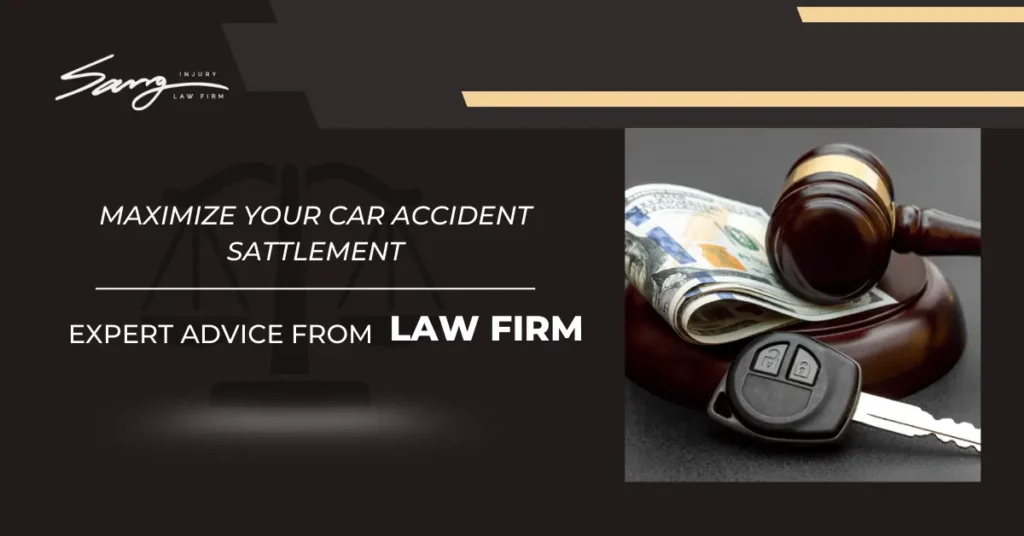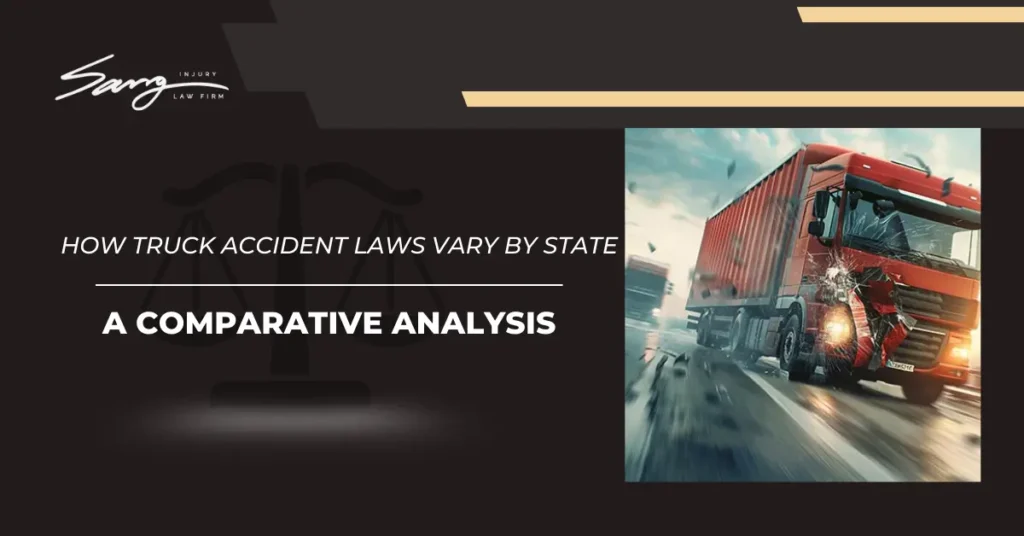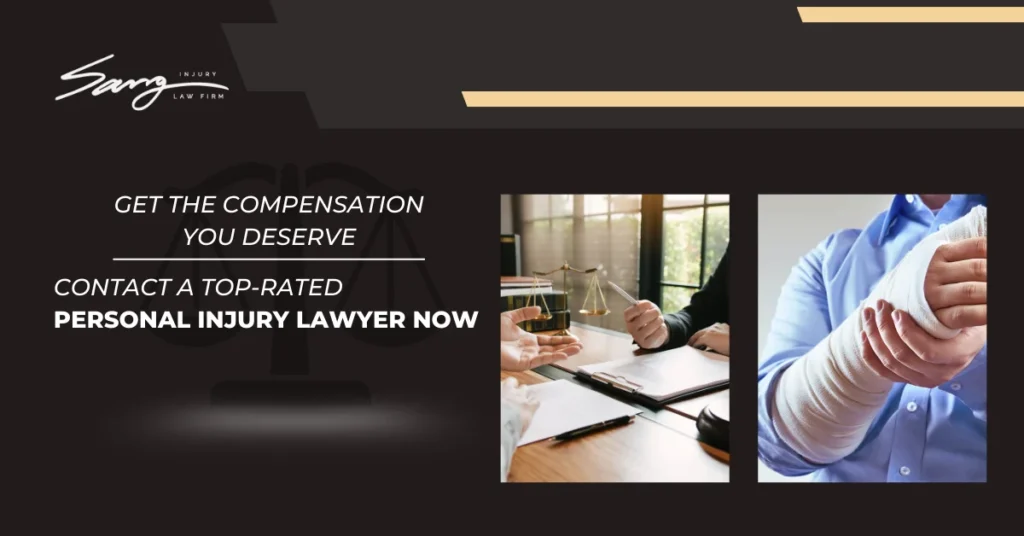Every year, thousands of Texans find themselves navigating the aftermath of car accidents. These incidents not only cause physical and emotional strain but also introduce the complexities of dealing with insurance claims. Understanding how to manage these claims in Texas effectively is crucial for ensuring that you are fairly compensated for your losses. This guide offers a detailed step-by-step approach to handling insurance claims following a car accident, tailored specifically to the Texas legal framework.
Understanding Texas Car Accident Laws
In Texas, the process of making an insurance claim after a car accident hinges on the state’s “at-fault” insurance system. Unlike “no-fault” states, where each party’s insurance covers their own losses regardless of who caused the accident, Texas requires the party at fault to compensate the other party for their damages. This system underscores the importance of determining fault in an accident, as it directly influences the claim process.
Texas “At-Fault” Insurance System
Under the Texas “at-fault” system, the driver who is responsible for causing the accident is also responsible for any resulting harm. This includes property damage and personal injuries. The victim can file a claim directly with the at-fault driver’s insurance company, seeking compensation for medical expenses, lost wages, and other related costs.
Comparative Negligence in Texas
Texas also follows a rule known as “comparative negligence.” This means that during an accident claim, the degree of fault is considered for all involved parties. If you are found to be partially at fault for the accident, your ability to recover damages may be reduced by your percentage of fault. For example, if you are 20% at fault in an accident and the total damages amount to $10,000, your recoverable damages will be reduced to $8,000.
Step 1: Immediate Actions at the Accident Scene
The moments immediately following a car accident are crucial for the success of an insurance claim in Texas. Here are the essential steps to take right at the scene:
Ensuring Safety and Checking for Injuries
First and foremost, assess the safety of the scene and check for injuries among all parties involved. Immediate medical attention should be your top priority, even for seemingly minor injuries, as some symptoms may appear later.
Legal Obligations: Reporting the Accident to the Police
Texas law requires that any car accident resulting in injury, death, or significant property damage be reported to the police. A police report is invaluable as it provides an official and neutral account of the accident, which can be critical when filing your insurance claim.
Documenting the Accident: Information and Photo Collection
Gather as much information as possible at the scene. Exchange contact and insurance details with the other driver and take detailed notes on the accident. Photographs of the vehicles, the accident site, and any visible injuries are essential. These photos can serve as evidence to support your claim, helping to accurately depict the scene and the extent of damages or injuries.
Step 2: Reporting the Accident to Your Insurance
Once you have ensured safety at the accident scene and gathered the necessary information, the next critical step is reporting the accident to your insurance provider. Prompt notification is crucial and should typically occur within 24 hours of the accident, if possible.
How and When to Notify Your Insurance
Contact your insurance company as soon as you can safely do so. Most insurers offer 24/7 claim reporting services, either online or by phone. Delaying this report can complicate the claims process and even jeopardize your coverage.
Essential Details to Provide to Your Insurer
When reporting the accident, be prepared to provide detailed information, including:
- The date and time of the accident.
- The location of the accident.
- A detailed description of how the accident occurred.
- Information about the other vehicle and driver, including license plate numbers and insurance details.
- Names and contact details of any witnesses.
- The police report number, if applicable.
Step 3: Understanding Your Coverage
Knowing the specifics of your insurance coverage is essential to understand what costs you can expect your policy to cover after an accident.
Breakdown of Liability, Collision, and Comprehensive Coverage
- Liability Coverage: This is mandatory in Texas and covers damages or injuries you cause to others. It does not cover your own injuries or vehicle damage.
- Collision Coverage: Optional but recommended, collision coverage pays for damage to your vehicle resulting from a collision, regardless of fault.
- Comprehensive Coverage: Also optional, this coverage pays for damage to your vehicle from non-collision events such as theft, vandalism, or weather incidents.
Importance of Understanding Minimum Coverage Requirements in Texas
Texas law requires drivers to carry minimum amounts of liability coverage, known as 30/60/25 coverage:
- $30,000 for injuries per person, up to a total of $60,000 per accident.
- $25,000 for property damage.
Understanding these limits is crucial as they determine the extent of coverage provided in an accident. Consider purchasing higher limits or additional policies like collision or comprehensive coverage for greater protection.
Step 4: Handling the Other Party’s Insurer
Interacting with the other driver’s insurance company can be challenging but is often necessary to resolve the claim.
How to Interact with the Other Driver’s Insurance Company
When you interact with the other driver’s insurance company, it is essential to communicate clearly and concisely. Provide all the necessary documentation that supports your claim, such as photos from the accident scene, a copy of the police report, and records of any medical treatments if applicable.
However, it is crucial to avoid discussing who was at fault or the specifics of how the accident occurred unless you have legal representation. This can include not providing more information than what is strictly necessary and always keeping your communications professional and to the point. Remember, the other insurer is not working on your behalf, and their primary goal is to minimize what they pay out in claims.
Do’s and Don’ts of Discussing the Accident with Other Insurers
Do: Ensure all your statements are factual and based on evidence. This includes only sharing documented details such as the location, time of the accident, and any objective observations you made.
Do: Keep records of all communications, including dates, the person you spoke with, and the contents of the conversation. This documentation can be invaluable in resolving disputes that may arise later.
Don’t: Discuss any injuries or damages not yet officially diagnosed or assessed. Speculative statements can be used to challenge the validity of your claim.
Don’t: Sign any documents or accept any settlement offers without thoroughly reviewing them, preferably with the assistance of a lawyer. Early settlement offers may not fully compensate for all damages, especially those that appear over time.
Step 5: Managing Communications with Your Insurance Company
Effectively managing communications with your insurance company is essential for a successful claims process. Organized and timely interactions can greatly influence the outcome of your claim.
- Keep Detailed Records: Document every interaction with your insurance company. Note the date, the name of the agent, and key points discussed. This will be invaluable if disputes arise during the claims process.
- Understand Your Policy: It’s crucial to thoroughly understand the details of your policy. Knowing what is covered and the limits of your coverage can help you navigate conversations and ensure you are fully utilizing your benefits.
- Respond Promptly: Quick responses to your insurance company’s requests can help avoid delays. Ensure that you provide any requested information or documents as soon as possible to keep the process moving smoothly.
Insurance adjusters have a critical role in the claims process, as they assess the damage and determine the payout based on your policy.
- Prepare for Discussions: Before you meet with the adjuster, gather all pertinent information about the accident, including any evidence such as photos or witness statements. This preparation will help you present a clear and factual case.
- Negotiate if Necessary: Remember that the first settlement offer is not always the final offer. Be prepared to negotiate with the adjuster to reach a fair settlement that covers all your losses.
- Maintain Professionalism: A positive rapport with the insurance adjuster can influence the handling of your claim. Always aim to be professional and courteous in all interactions.
Step 6: Assessing Vehicle Damages
The way your vehicle’s damages are assessed is pivotal to your insurance claim. The insurance company will typically require a professional evaluation, which can determine how much they will reimburse for repairs.
- Professional Inspection: Your vehicle will likely be inspected by a professional adjuster or at an approved body shop. This evaluation is critical to determining the extent of the damage and the estimated cost of repair.
- Use of Estimation Software: Many insurers use specialized software to provide a standard estimation of repair costs, which helps standardize claims processing.
If you are not satisfied with your insurance company’s damage assessment, you have a few options to consider:
- Independent Evaluation: You can seek a second opinion by having your vehicle independently evaluated by another professional. This can help if there’s a significant discrepancy in the repair estimates.
- Mediation Option: Some insurance policies offer mediation to resolve disputes, which can be a quicker alternative to legal action.
- Seek Legal Advice: If disputes over the assessment cannot be resolved through normal channels, it may be beneficial to consult with an attorney who specializes in insurance law.
Step 7: Medical Claims and Personal Injuries
Handling medical claims efficiently is crucial, especially when injuries are involved. Immediate and detailed documentation of all medical treatments is essential for substantiating your claim.
- Immediate Medical Attention: Seek medical treatment immediately after the accident, regardless of the apparent severity of your injuries. Documenting your injuries shortly after the incident can significantly support your claim.
- Continuous Documentation: Keep detailed records of all medical visits, treatments received, prescriptions, and other related expenses. These documents are crucial when it comes time to prove the extent of your injuries and to quantify your claim.
- Keep Your Insurer Informed: Regular updates to your insurance provider about your medical condition and treatments can help ensure that your medical expenses are fully considered and covered under your claim.
Step 8: Determining Fault and Its Implications
In Texas, determining fault after a car accident is a critical aspect that directly impacts the insurance claims process. Texas follows a “modified comparative fault” rule, meaning that each party involved in an accident has their damages reduced by their percentage of fault—as long as their portion of fault does not exceed 50%. This system emphasizes the importance of accurately establishing each party’s degree of responsibility during an accident.
The process of determining fault begins with the gathering of evidence at the accident scene, which includes police reports, witness statements, and any available video footage. Insurance companies will use this evidence to assess fault when processing claims. This assessment is crucial, as the fault percentage assigned to you will directly affect your ability to recover damages. For instance, if you are found to be 30% at fault in an accident with $10,000 in damages, you would only be eligible to recover $7,000.
The implications of fault extend beyond financial aspects. A determination of fault can also affect your insurance premiums and your ability to file claims in the future. Understanding these nuances is essential for anyone involved in a car accident in Texas.
Step 9: Negotiating the Insurance Settlement
Negotiating an insurance settlement can often seem daunting, but with the right strategies, you can effectively advocate for a fair resolution. It is crucial to enter negotiations well-prepared, armed with all relevant evidence from the accident, including detailed medical records, repair estimates, and any documentation of lost wages. This information will support your claim and help justify your settlement demands.
Here are key strategies for effective negotiation:
- Understand the Value of Your Claim: Before negotiations begin, calculate a fair value for your claim, considering all damages, both immediate and long-term.
- Don’t Accept the First Offer: Insurers often start with a low offer. Be prepared to reject this initial bid if it does not meet your calculated claim value.
- Communicate Clearly and Confidently: Present your evidence systematically to counter any undervaluations by the insurance company.
Knowing when and how to accept a settlement offer is equally crucial. Typically, you should consider accepting an offer when it closely aligns with your damage assessment and you believe it compensates fairly for your losses. Always review the final settlement offer in detail, ensuring it covers all necessary expenses and losses before agreeing.
Step 10: When to Seek Legal Assistance
Navigating insurance claims can be straightforward in some cases, but complex scenarios often require legal expertise. Knowing when to consult an attorney can significantly influence the outcome of your claim.
- Complex Liability Issues: If the accident involves multiple parties, severe injuries, or disputed fault, legal representation can help clarify your position and protect your interests.
- Unsatisfactory Settlement Offers: An attorney can be crucial if the insurance company’s settlement offer does not adequately cover your losses or if negotiations have reached a stalemate.
The benefits of legal advice in complex claims are manifold:
- Expert Guidance: Lawyers specializing in personal injury and insurance law can navigate the legal nuances that might elude non-specialists.
- Advocacy: An attorney will advocate on your behalf, ensuring that all proceedings are conducted fairly and that your rights are protected.
- Maximizing Your Settlement: Legal professionals have the expertise to accurately assess the full value of your claim and negotiate effectively with insurers.
Conclusion:
Navigating insurance claims after a car accident in Texas requires a comprehensive understanding of both the procedural steps and the legal landscape. From the immediate actions at the accident scene to the final negotiations of an insurance settlement, each phase of the process is pivotal in securing the compensation you deserve. Understanding the specificities of Texas’s “at-fault” insurance system and the implications of comparative negligence is crucial for anyone involved in an automobile accident within the state.
The journey through insurance claims is complex and demands diligence and attention to detail. Start by ensuring accurate documentation from the moment the accident occurs; continue by effectively communicating with your insurance company and understanding the full extent of your coverage. Assessing vehicle damages and managing medical claims also require thoroughness to ensure nothing is overlooked. Negotiating with insurance companies and determining fault are intricate processes that may benefit from professional legal advice, especially in cases where liability is disputed or the settlement offered does not meet your needs.
As you embark on this challenging process, remember the importance of being well-informed and prepared. Do not hesitate to seek legal support when necessary to navigate the complexities of insurance claims effectively. Legal professionals can provide invaluable assistance, ensuring that your rights are protected and that you receive a fair and adequate settlement. Approaching this process with a strategic mindset and the right support will help you manage the aftermath of a car accident more smoothly and with greater confidence.
For expert guidance through this intricate process, consider partnering with Sang Injury Law Firm. Our team specializes in navigating the complexities of Texas car accident claims, ensuring that you receive comprehensive legal support tailored to your needs. Learn more by visiting Sang Injury Law Firm.

